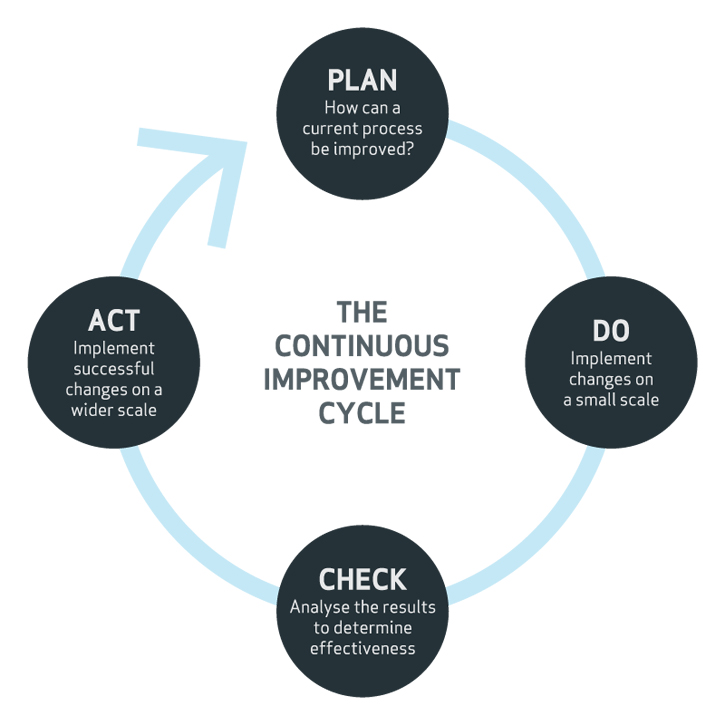Continuous Improvement
Continuous improvement is the ongoing improvement of products, services, or processes through a step-by-step strategy of implementing small changes in a continuing cycle so as to achieve the highest standards and continually reduce operational overheads.
Practicing continuous improvement involves identifying current processes, procedures, work flows, or projects in the business and using tools to make them more efficient and effective.
One of the most widely used tools for continuous improvement is a four-step quality model, the plan-do-check-act (PDCA) cycle:

- Plan – Identify an opportunity for improvement and plan for change
- Identifying areas for improvement and investigating these areas is the first step that should be taken before any changes are planned. Think about the following questions while considering where time and effort should be devoted:
- How many people are affected by the current process?
- How much time is spent working within this process?
- What could be gained (time, money, etc.) by improving the process?
- How would any changes to this process impact other teams or processes?,
- Meeting with the team(s) that would be impacted by changes to the process, to brainstorm for opportunities for streamlining the process. The workers themselves will inevitably have better ideas than others as they have already considered ways to make their jobs more efficient.
- Identifying areas for improvement and investigating these areas is the first step that should be taken before any changes are planned. Think about the following questions while considering where time and effort should be devoted:
- Do – Implement the change on a small scale
- Check – Analyse the results of the change in order to determine effectiveness
- Act – If the change was successful, implement it on a larger scale and continue to assess results. If the change was unsuccessful begin the cycle again.
- As changes are implemented on a wider scale continue to reassess their value and identify areas that could be improved upon again. The cycle for continuous improvement is just that, continuous.
Using continuous improvement can help to streamline workflows, save time and money, reduce waste, and enhance attitudes. By continuously working through the model, team members are always striving for greater levels of quality standards and efficiency within the company.
